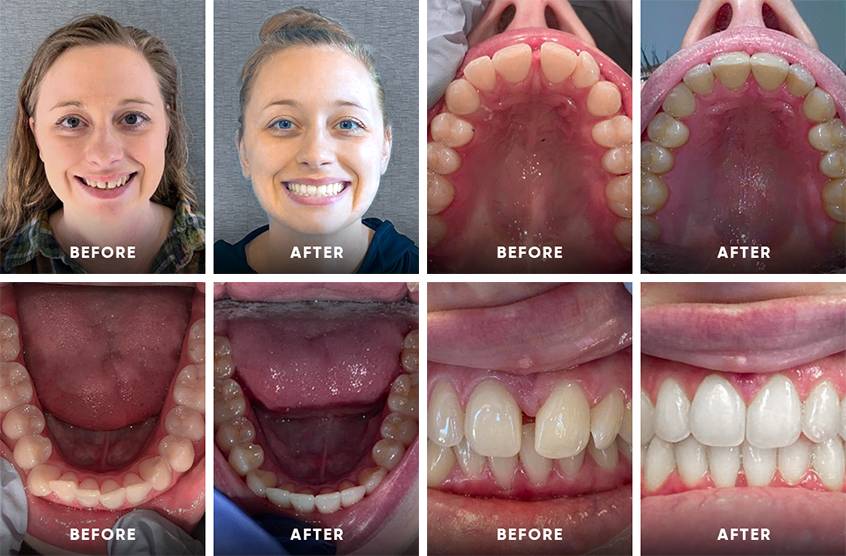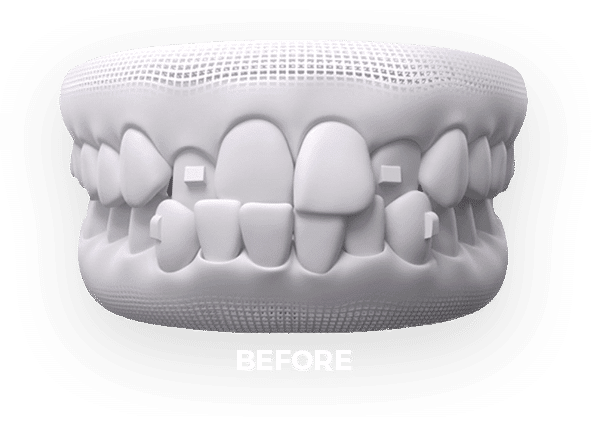Frequently Asked Questions Concerning Invisalign: Everything You Required to Know
Frequently Asked Questions Concerning Invisalign: Everything You Required to Know
Blog Article
Invisalign vs. Standard Dental braces: Which Choice Is Right for You?
When thinking about orthodontic treatment, the option between Invisalign and typical dental braces presents several essential aspects that warrant mindful evaluation. Invisalign offers a discreet option with removable aligners, while standard dental braces supply an extra noticeable yet reliable remedy for extreme imbalance. Each alternative incorporates distinctive advantages and downsides connected to looks, convenience, therapy period, and expense. Understanding these nuances is essential for making an informed decision that aligns with your individual choices and way of living. The concern stays: which choice will finest satisfy your orthodontic needs and expectations?
Introduction of Treatment Options

In comparison, typical braces include steel brackets and wires that are adhered to the teeth. This technique uses constant stress over time to attain placement. While effective for complicated orthodontic concerns, typical braces require regular visits for changes and can posture challenges in preserving dental health due to the problem of cleaning about wires and brackets.
Both choices have their merits, and the choice typically rests on details oral conditions, lifestyle preferences, and client compliance. Eventually, consulting an orthodontic professional is essential for figuring out one of the most ideal therapy strategy customized to specific demands. Recognizing the subtleties of each alternative can dramatically influence the total success of orthodontic treatment.
Aesthetic Considerations
A considerable factor affecting the option between Invisalign and typical braces is the aesthetic charm each treatment offers. Invisalign aligners are crafted from clear plastic, making them basically undetectable when worn.
In contrast, typical dental braces are composed of metal braces and cables, which can be much more visible. While developments in orthodontic technology have actually caused the development of smaller sized brackets and colored elastics, typical braces still maintain a more obvious profile. For some people, the exposure of braces might prevent them from seeking needed therapy.
Inevitably, the choice between Invisalign and conventional braces may depend upon individual preferences relating to looks. Clients that focus on discretion usually favor Invisalign, while those that are much less concerned regarding presence might go with typical braces. Comprehending the visual implications of each choice is crucial for making a notified choice that aligns with one's way of living and preferences.
Comfort and Convenience

In regards to comfort, Invisalign aligners are detachable, allowing individuals to appreciate their preferred foods without limitation and preserve optimal oral health. Cleaning and flossing are simplified, as the aligners can be obtained throughout these routines, whereas traditional dental braces need cautious maneuvering around cables and brackets.
In contrast, standard braces require normal adjustments, making them much less convenient for those with hectic timetables. Overall, the convenience and ease of Invisalign make it an attractive option for many individuals looking for orthodontic therapy.
Treatment Period and Effectiveness
While both Invisalign and standard dental braces work in fixing oral imbalances, the duration of treatment can vary dramatically between Recommended Reading both choices. Typically, Invisalign treatment can take anywhere from 12 to 18 months, depending upon the intricacy of the instance. The clear aligners function by gradually moving teeth right into their wanted positions, and regular follow-ups with an orthodontist assistance make sure progression remains on track.
On the other hand, standard dental braces commonly require a longer commitment, typically ranging from 18 months to three years. This is because of their set nature and using braces and cords, which can be much more efficient for extreme imbalances and intricate instances (Invisalign). The treatment efficiency of conventional braces is well-documented, as they allow for precise adjustments and higher control over tooth motion
Ultimately, the choice in between Invisalign and typical dental braces may rest on both the anticipated therapy period and the certain dental issues handy. Consulting with an orthodontist is critical, as they can give customized suggestions based on specific demands, making sure the selected method straightens with preferred durations and outcomes.
Price Contrast and Insurance Coverage Options
Price plays a considerable role in the decision-making procedure for individuals considering orthodontic therapy, whether selecting Invisalign or traditional dental braces. Typically, the cost of Invisalign varieties from $3,000 to $8,000, while typical dental braces normally set you back between $2,000 and $6,000. Factors influencing these prices include the intricacy of the situation, the duration of therapy, and geographical location.
Insurance policy coverage can considerably affect out-of-pocket costs. Numerous oral insurance coverage strategies offer partial insurance coverage for orthodontic treatments, yet the specifics can vary commonly. It is essential for people to evaluate their insurance coverage to figure out the level of coverage for either choice. Generally, conventional dental braces may be much more regularly covered by insurance plans contrasted to Invisalign, which some insurance providers classify as an aesthetic procedure.
Additionally, several orthodontic practices provide versatile settlement strategies, making both therapy options more easily accessible. People need to ask about potential financing options and discounts for upfront payments. Evaluating the total cost, including insurance advantages and settlement strategies, is crucial for making an educated choice that straightens with both visual choices and budget plan considerations.

Conclusion
In recap, the selection in between Invisalign and typical dental braces pivots on several elements, including aesthetic choices, convenience, therapy period, and expense. Invisalign uses a very discreet, removable option that helps with oral additional resources health and nutritional versatility, while conventional braces might be preferable for complex dental issues and usually come at a lower price factor. Eventually, assessment with an orthodontist is important to evaluate specific scenarios and figure out the most appropriate therapy choice for achieving optimum dental alignment.
When taking into consideration orthodontic treatment, the selection between Invisalign and traditional dental braces presents numerous essential factors that warrant careful examination.Comparing Invisalign and typical braces discloses distinct therapy options for orthodontic modification.While both Invisalign and conventional dental braces are effective in remedying dental misalignments, the period of treatment can differ considerably in between the two choices.Price plays a significant function in the decision-making procedure for individuals taking into consideration orthodontic treatment, you could try these out whether choosing for Invisalign or typical braces.In recap, the choice between Invisalign and typical braces hinges on several variables, including visual choices, convenience, treatment duration, and expense.
Report this page